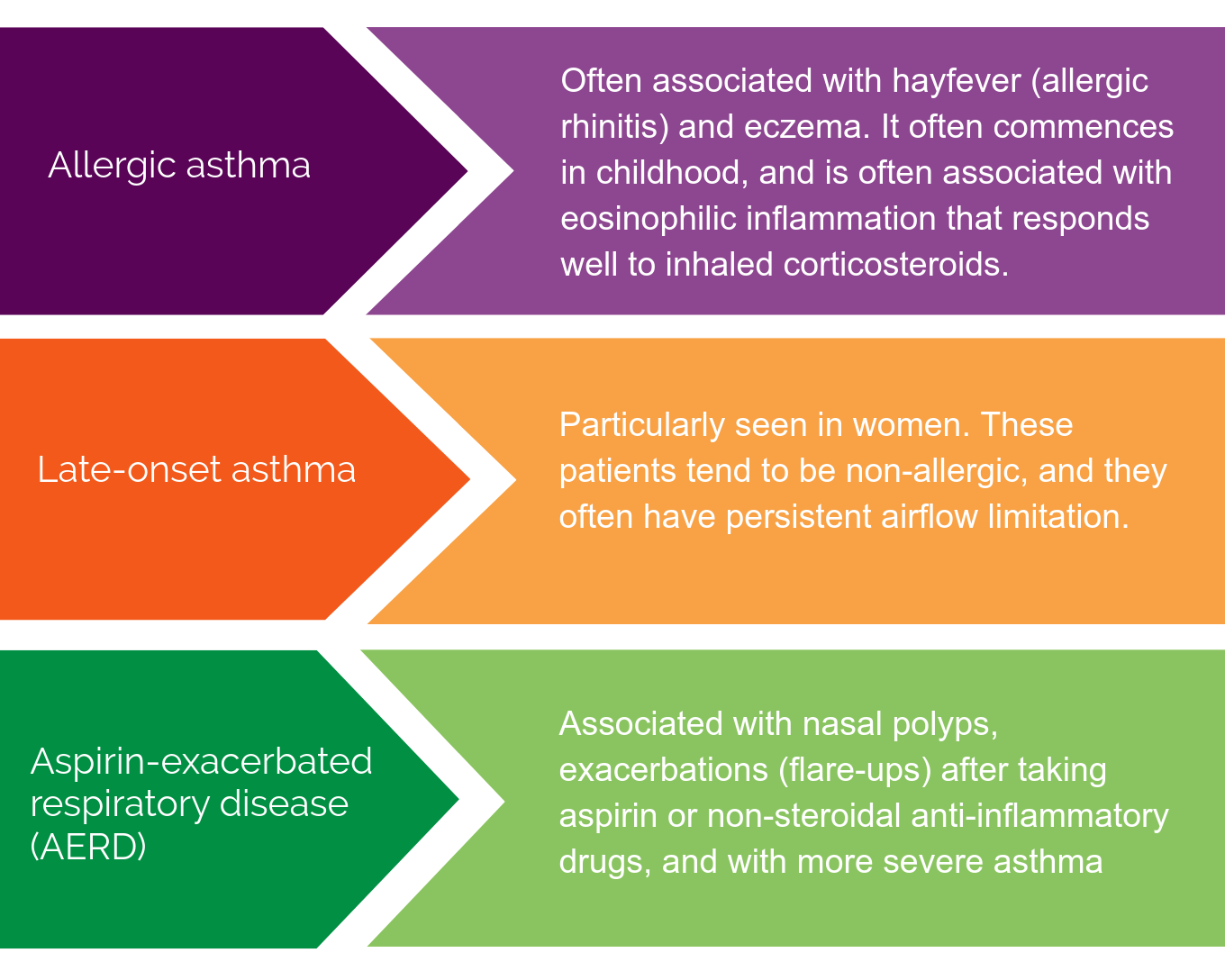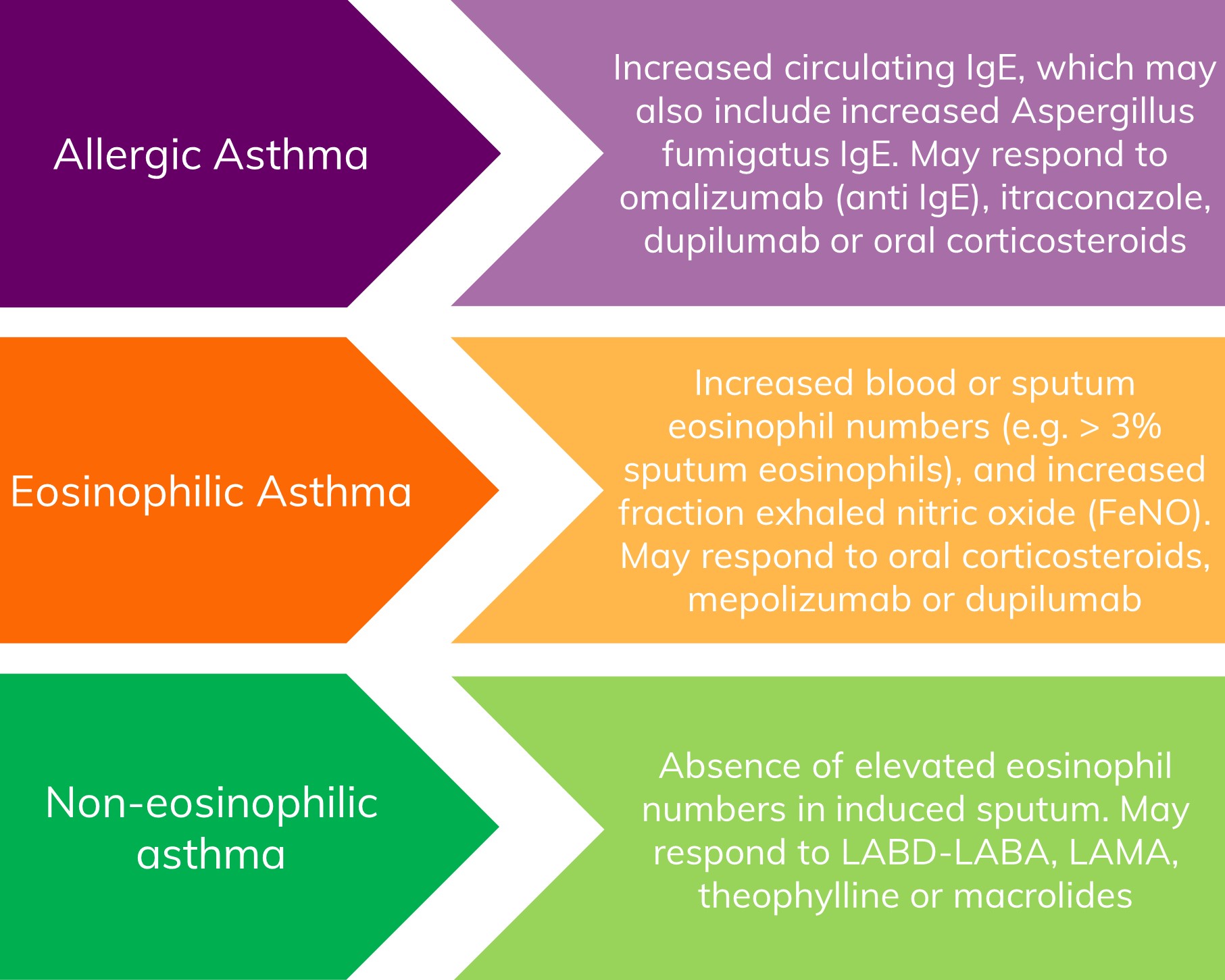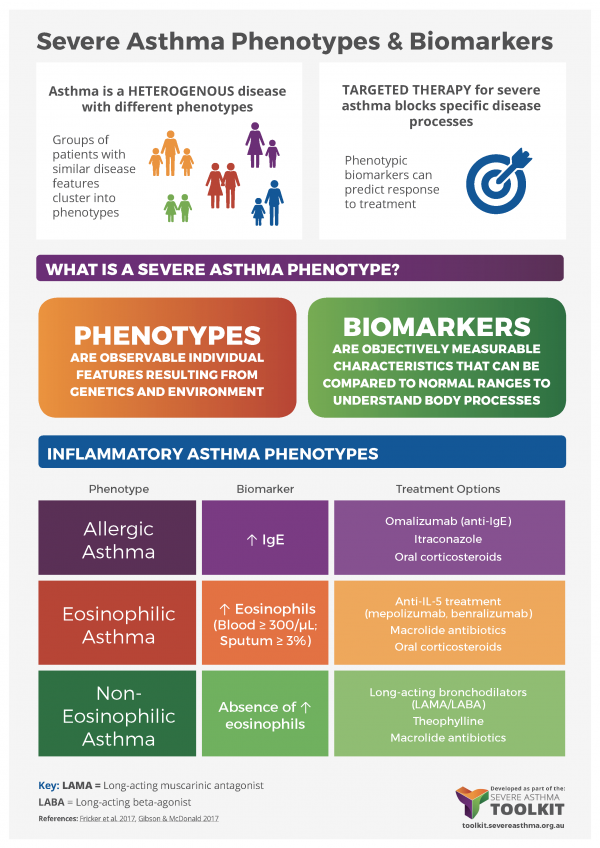Asthma Phenotypes
Asthma is heterogeneous, meaning that there are many different types of asthma, across the whole range of severity from mild to severe. Recognisable clusters of demographic features, clinical characteristics, lung function and inflammation are called “asthma phenotypes”.
For example, some well-recognised clinical asthma phenotypes include:



